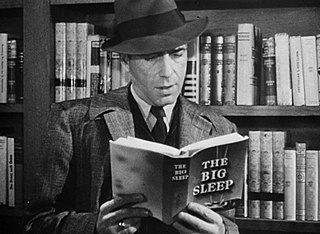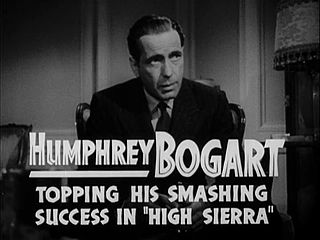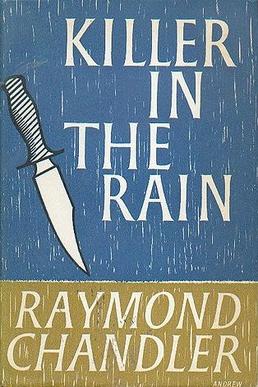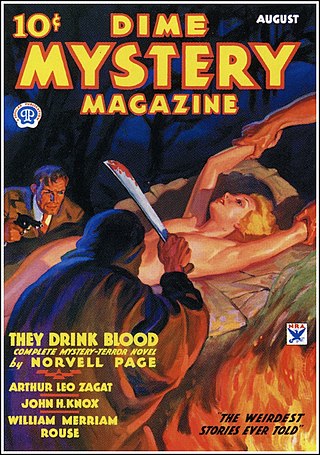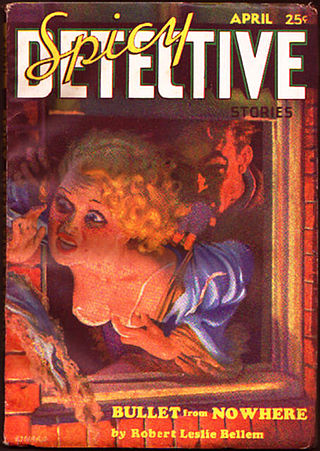Career

Daly is generally considered vital to the history of the hardboiled crime genre, less for the quality of his writing than the fact that he was the first writer to combine all the elements of the style and form that we now recognize as the dark, violent hardboiled story. Enormously popular in his time, Carroll's no-nonsense tough-guy detective stories have gone on to influence not only contemporaries such as Dashiell Hammett, but Mickey Spillane and dozens of other writers. Daly's popularity was high enough that his name appearing on the cover of a magazine was enough to boost sales by 15 percent. A Black Mask readers' poll once showed Daly as the most popular writer in the magazine, ahead of Hammett and Erle Stanley Gardner. Today, his writing is often considered "something between quaint and camp", in the words of genre historian William L. DeAndrea. [4] [2] [5] Lee Server has noted, however, that comparing Daly with his better-remembered successors may be unfair, and that Daly's most crucial influence on the genre was his rejection of what was mainstream detective fiction during Daly's own time—instead of the mannered, aristocratic sleuths of drawing-room mysteries, Daly was influenced by the avenging vigilantes of Westerns and stories of the American frontier, such as Wyatt Earp and James Fenimore Cooper's Natty Bumppo, who were more likely to solve a case with their fists than a magnifying glass. [3]
Daly has been credited with creating the first hard-boiled story, "The False Burton Combs", published in Black Mask magazine in December 1922, followed closely by "It's All in the Game" (Black Mask, April 1923) and the PI story "Three Gun Terry" (Black Mask, May 1923). [6] [7] DeAndrea has noted that Daly's stories were less concerned with updating Victorian-era drawing room mysteries than Wild West stories, and that his tough, urban heroes were most similar to the gunslingers of Westerns than detectives or sleuths of earlier works, calling them "two-gun kids riding an urban range, delivering death and justice via the same hot lead route as the gunfighters of dime novels". [4] By virtue of being first (along with Hammett), Daly set the rules of the hardboiled genre that would be adhered to, or broken, by future writers. [8]
Race Williams
Daly's private detective Race Williams was his most successful creation, appearing in about 70 stories and eight novels. Lee Server has called the character "the single most popular private eye in the history of the pulps." [3] Although Black Mask editor Joseph Shaw did not like the Race Williams stories, they were so popular with readers that he asked Daly to continue writing them. [1] Thus, Race Williams became the first hardboiled detective to have his own series. [2]
He first appeared in "Knights of the Open Palm", an anti-Ku Klux Klan story. [1] "Knights of the Open Palm" was published June 1, 1923, in Black Mask, predating the October 1923 debut of Dashiell Hammett's Continental Op character. [9] [10] [11]
Daly's Williams was a rough-and-ready character with a sharp tongue and established the model for many later acerbic private eyes. Race Williams' hards-as-nails, unsubtle characterization was in many ways a model for the taciturn, violent and hypermasculine hardboiled private eye. DeAndrea called Williams "a tough, cocky, nearly mindless investigator who shot his way through his cases." Williams exemplified the hardboiled P.I., from his generally antagonistic relationship with the police, to his (largely) aloof, even Victorian attitude toward women, to his disinterest in financial reward as much as the thrill of the hunt. [8]
Other work
Daly also created other pulp detectives, including Detective Satan Hall, "Three-Gun Terry" Mack, and Vee Brown. [4] In addition to Black Mask, Daly also wrote for other pulp magazines, including Detective Fiction Weekly and Dime Detective. [12] After leaving Black Mask, Daly found other magazines did not want serials. Daly’s solution was the ‘story arc’, stand alone stories that did not depend on each other, yet tied together to make a larger theme/plot.
His other characters included Clay Holt, a detective almost identical to Race Williams, created by Daly when he left Black Mask; all of the Holt stories were published by Dime Detective instead. One of the Holt stories, "Ticket to a Crime", has the distinction of being Daly's only story to be adapted into a Hollywood movie, the 1934 Lewis D. Collins film Ticket to a Crime . [13]
In the 1940s, Daly's work fell out of fashion with crime fiction readers, and he moved to California to work on comics and film scripts. [3] [4] [14] When Mickey Spillane became a bestselling novelist with Mike Hammer, a character similar to Daly's detectives, Daly remarked "I'm broke, and this guy gets rich writing about my detective." [1] However, Spillane wrote Daly a fan letter saying that Race Williams was the model for his own Mike Hammer. The story goes (at least as far as Spillane told it) that when Daly’s agent at the time saw the letter, she instituted a plagiarism suit. Whereupon Daly canned her because he hadn’t gotten a fan letter in years and he wouldn't sue anybody who had taken the time to write one. [3]
Daly's papers are archived in the Department of Special Collections at the UCLA Library. [15]


